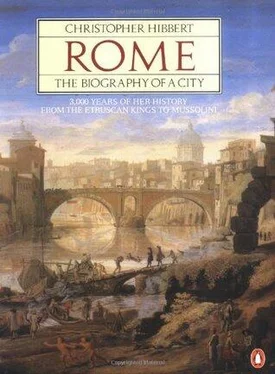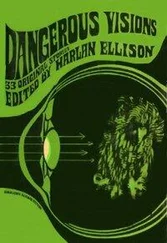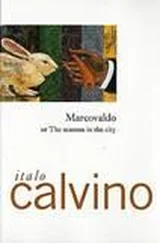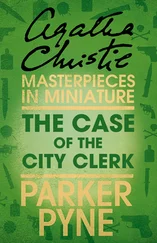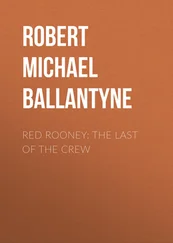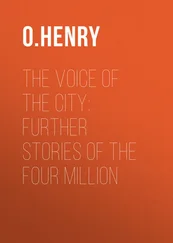Christopher Hibbert - Rome. The Biography of the City
Здесь есть возможность читать онлайн «Christopher Hibbert - Rome. The Biography of the City» весь текст электронной книги совершенно бесплатно (целиком полную версию без сокращений). В некоторых случаях можно слушать аудио, скачать через торрент в формате fb2 и присутствует краткое содержание. Жанр: Культурология, Искусство и Дизайн, на английском языке. Описание произведения, (предисловие) а так же отзывы посетителей доступны на портале библиотеки ЛибКат.
- Название:Rome. The Biography of the City
- Автор:
- Жанр:
- Год:неизвестен
- ISBN:нет данных
- Рейтинг книги:3 / 5. Голосов: 1
-
Избранное:Добавить в избранное
- Отзывы:
-
Ваша оценка:
- 60
- 1
- 2
- 3
- 4
- 5
Rome. The Biography of the City: краткое содержание, описание и аннотация
Предлагаем к чтению аннотацию, описание, краткое содержание или предисловие (зависит от того, что написал сам автор книги «Rome. The Biography of the City»). Если вы не нашли необходимую информацию о книге — напишите в комментариях, мы постараемся отыскать её.
Rome. The Biography of the City — читать онлайн бесплатно полную книгу (весь текст) целиком
Ниже представлен текст книги, разбитый по страницам. Система сохранения места последней прочитанной страницы, позволяет с удобством читать онлайн бесплатно книгу «Rome. The Biography of the City», без необходимости каждый раз заново искать на чём Вы остановились. Поставьте закладку, и сможете в любой момент перейти на страницу, на которой закончили чтение.
Интервал:
Закладка:
20. The CORTILE DELLA PIGNA takes its name from the colossal bronze pine-cone of the imperial era which had been found in the BATHS OF AGRIPPA. Below it is the CORTILE DELLA BIBLIOTECA formed by the construction across the original main courtyard of the Belvedere of two transverse buildings, the LIBRARY, built by Domenico Fontana for Pope Sixtus V from 1585 to 1590, and the Braccio Nuovo, built by Raffaello Stern in 1817–22 for Pope Pius VII. The Braccio Nuovo contains a part of the collection of the MUSEO CHIARAMONTI founded by Pius VII.
21. The COURT OF ST DAMASUS was originally an orchard planted with apple trees by Nicholas V. The construction of the buildings forming the court was begun by Pope Clement VII after the Sack of Rome and completed by Pope Sixtus V.
22. The SISTINE LOGGIA surmounting the roof of the LATERAN PALACE was begun by Domenico Fontana for Pope Sixtus V in 1586.
23. The CAPPELLA SISTINA in S. MARIA MAGGIORE was begun by Domenico Fontana for Pope Sixtus V in 1585.
24. The CAPPELLA GREGORIANA was completed in 1583.
25. The OBELISKin ST PETER'S SQUARE was transported by Caligula from Heliopolis in A.D. 37 for the circus which he built on the Vatican hill. The circus was enlarged by Nero and came to be known as the CIRCUS OF NERO. It was near his gardens where so many Christians were cruelly executed after the fire of A.D. 67.
26. The CAPPELLA DI S. ANDREA was originally the circular tomb of the Emperor Theodosius. It was remodelled by Pope Symmachus early in the sixth century. In the Middle Ages it became the church of S. Maria della Febbre. Its dedication was changed when the head of St Andrew was placed here in the middle of the fifteenth century. It was replaced by the new SACRISTY (see note 2, Chapter 14).
27. Giacomo della Porta's CAPPELLA CLEMENTINA contains Thorwaldsen's monument to Pius VII. Placed here in 1823, it is the only work in ST PETER'S by an artist who was not a Roman Catholic.
12. BERNINI AND THE BAROQUE
1. The CAPPELLA PAOLINA or BORGHESE CHAPEL was completed in 1611 for Pope Paul V by Flaminio. Pietro Bernini worked on some of the sculpture for Ponzio's tomb of Clement VIII (1592–1605) which is opposite that of Paul V. Some of the frescos are by Guido Reni. The painting of the Madonna above the altar, which was originally attributed to St Luke, is a work of Roman Byzantine art of the ninth century.
2. The FONTANONE DELL' ACQUA PAOLA, which stands like a triumphal arch overlooking Rome from the Janiculum, was designed by Giovanni Fontana and Flaminio Ponzio, who had also been responsible for reconstructing the aqueduct.
3. Of the fountains created at this time the most noteworthy are: In Piazza Scossa Cavalli. This was designed by Carlo Maderno between 1613 and 1621. When the piazza was engulfed by the opening up of the Via della Conciliazione in 1950, the fountain was removed to its present position in front of the church of S. ANDREA DELLA VALLE.
In Piazza S. Maria Maggiore, also by Carlo Maderno and completed in 1614. Its basin lies below the bronze statue of the Madonna and Child by Guillaume Bertholet which crowns the tall fluted column, the only remaining one of eight that stood in the BASILICA OF MAXENTIUS.
In Piazza S. Giovanni in Laterano, finished in 1607. This surrounds the obelisk, the tallest in Rome, which was made for the Temple of Ammon in Thebes in the fifteenth century B.C. and was erected in the CIRCUS MAXIMUS in A.D. 357. The obelisk was removed to its present position under the direction of Domenico Fontana after it had been found lying in three pieces in the circus in 1587. It occupies the site of the equestrian statue of Marcus Aurelius which was transferred to the PIAZZA DEL CAMPIDOGLIO in 1538.
On the north side of St Peter's Square. Built by Carlo Maderno in 1613. This was described by John Evelyn as ‘the goodliest I ever saw’. Fed by water from the ACQUA PAOLA, it throws up a powerful jet of water to a height of sixty-five feet.
On the south side of St Peter's Square, a more or less exact copy of its counterpart. Although created later, it appears to be older because it is exposed to the full blast of the tramontana , while the other fountain is sheltered by the colonnade. Some authorities doubt the attribution to Bernini and credit its design to Carlo Fontana.
4. Built for Cardinal Scipione Borghese by Carlo Maderno in 1608–20, the High Baroque church of S. MARIA DELLA VITTORIA was originally dedicated to St Paul. It was rededicated to Our Lady of Victory after the defeat by the Habsburg Emperor Ferdinand II's Catholic forces of the Bohemian Protestants at the Battle of the White Mountain near Prague in 1620. The Catholics attributed their victory to a small image of the Madonna found by their troops in the ruins of the Castle of Prague. The façade of the church was added by Soria in 1626. In the Cornaro Chapel, overlooked by statues of various members of the Venetian Cornaro family in what appear to be boxes in a theatre, is Bernini's astonishing sculpture of St Teresa.
5. The work of several architects, probably including Vignola and, later, Martino Longhi the elder, the BORGHESE PALACE was completed for Paul V and his family by Flaminio Ponzio, Vasanzio ([van van Santen) and Maderno. Extensive alterations and additions were undertaken in the 1670s by Carlo Rainaldi, who designed the elegant portal and the gardens. The palace housed the Borghese family's famous art collection until it was moved to the VILLA BORGHESE in 1891. Napoleon's sister, Pauline Bonaparte, lived here after her marriage to the radical aristocrat Prince Camillo Borghese in 1803. The palace now houses Rome's most exclusive club, the Caccia or Hunt Club.
6. Completed soon after 1616 on the site of the Baths of Constantine, the PALAZZO PALLAVICINI-ROSPIGLIOSI was later acquired by Cardinal Bentivoglio who sold it to Cardinal Mazarin. It was afterwards purchased by G. B. Rospigliosi, a relation of Pope Clement IX (1667–9). Inside the courtyard is the Casino Pallavicini with Guido Reni's celebrated Aurora painted on the ceiling.
7. Bernini's bust of Scipione Borghese, completed in 1632, is in the VILLA BORGHESE.
8. In 575 St Gregory the Great transformed his large house on the Caelian hill into a monastery to which was attached an oratory dedicated to St Andrew. It was replaced, probably during the pontificale of Pope Paschal II (1099–1118) by a church dedicated to St Gregory. This church, S. GREGORIO MAGNO, was completely renovated externally in 1633 for Cardinal Scipione Borghese by Soria, who constructed the impressive flight of steps and the new façade. It was redecorated internally by Francesco Ferrari in 1725-34. The church contains an episcopal chair said to have belonged to St Gregory who is believed to have dispatched St Augustine from here to convert the English. Two English refugees buried here are Robert Pecham, who died in 1569, and Sir Edward Carne, an emissary who was sent by Henry VIII to Pope Clement VII to obtain consent to the annulment of the King's marriage to Catherine of Aragon and who, having also served Queen Mary, prudently decided, after Queen Elizabeth's accession, to remain in Rome as Warden of the English Hospice.
9. The casino of the VILLA BORGHESE was built by the Flemish architect, Ivan van Santen (Vasanzio), in 1613–16. The original grounds were extended by Cardinal Scipione Borghese so that by 1650 the boundary was about four kilometres long. The house was enlarged in the middle of the eighteenth century when Marcantonio Borghese commissioned Antonio Asprucci and a number of artists to decorate it and provide the existing galleries. Many of the pictures in the Borghese Gallery were sold by Prince Camillo Borghese to Napoleon, while two hundred of the best sculptures were exchanged for an estate in Piedmont. All these works of art are now in the Louvre. Some of the loss was made good when the Borghese family collection was moved here from the BORGHESE PALACE in 1891. The collection was bought by the Italian government in 1902.
Читать дальшеИнтервал:
Закладка:
Похожие книги на «Rome. The Biography of the City»
Представляем Вашему вниманию похожие книги на «Rome. The Biography of the City» списком для выбора. Мы отобрали схожую по названию и смыслу литературу в надежде предоставить читателям больше вариантов отыскать новые, интересные, ещё непрочитанные произведения.
Обсуждение, отзывы о книге «Rome. The Biography of the City» и просто собственные мнения читателей. Оставьте ваши комментарии, напишите, что Вы думаете о произведении, его смысле или главных героях. Укажите что конкретно понравилось, а что нет, и почему Вы так считаете.
